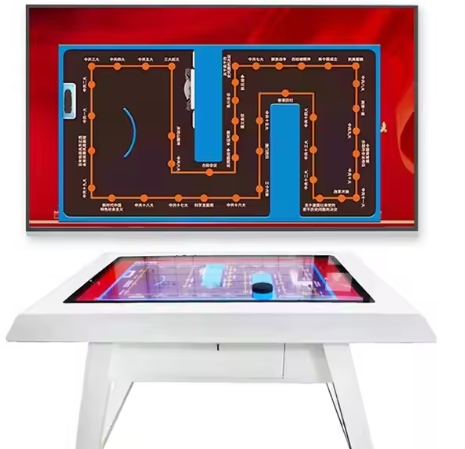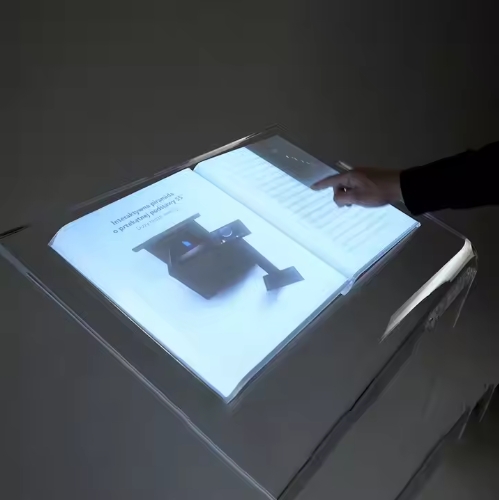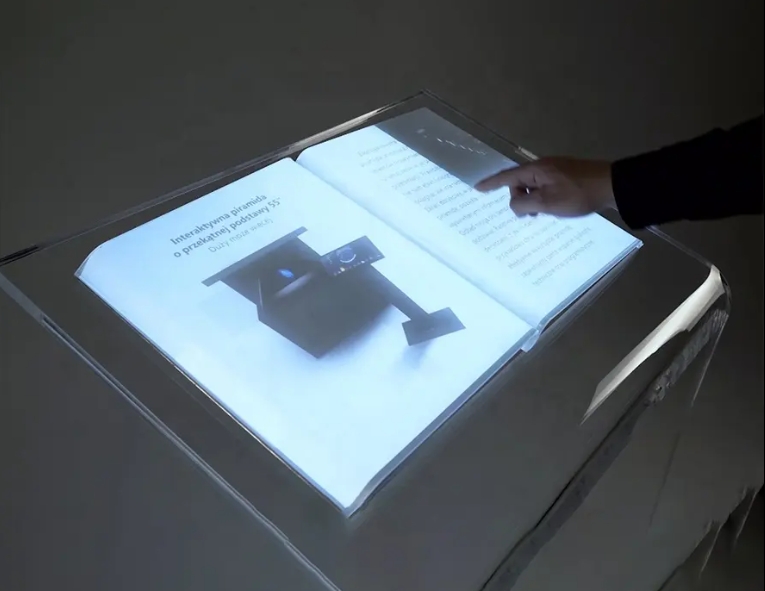With the rapid development of object recognition technology, exhibition hall designs are increasingly adopting these advancements to elevate multimedia interactions. Among the various applications, desktop object recognition, often called the “object recognition table,” has become a prominent interactive exhibit. This technology allows automatic detection and recognition of objects placed on a table, presenting corresponding information seamlessly. Museums, exhibition halls, and corporate showrooms use this innovation to provide tailored product introductions and immersive user experiences.
This guide explores the implementation, benefits, and diverse applications of desktop object recognition systems in exhibition hall multimedia interactions.

What Is Desktop Object Recognition in Exhibition Halls?
Desktop object recognition is an interactive system derived from computer vision technology. By integrating POE LiDAR modules on a desktop display screen, objects placed on the surface can be detected and identified, triggering specific content displays. Users can also interact with the displayed information by selecting content for deeper exploration.
Key Features
- Automatic Object Detection and Content Presentation: The system identifies objects in real-time and displays corresponding information.
- Interactive User Experience: Users can explore additional details by interacting with the interface.
- Flexibility and Portability: The POE LiDAR recognition module can be repositioned, enabling dynamic configurations and diverse use cases.
Benefits of Desktop Object Recognition in Exhibition Halls
1. Enhanced Visitor Engagement
This technology offers a personalized and precise information display, making it easier for visitors to access relevant content. The system can also support multi-user interaction, allowing several visitors to explore simultaneously—ideal for high-traffic areas.
2. Innovative Presentation Formats
Beyond standard content displays, the system can be adapted into interactive games or immersive learning tools, enriching the visitor experience and showcasing the versatility of the object recognition table.
3. Streamlined Operations
Incorporating automated recognition and display capabilities eliminates the need for constant human intervention, reducing workloads while ensuring accuracy and efficiency.
Applications of Desktop Object Recognition
Desktop object recognition tables can be customized to fit various thematic settings, making them suitable for a wide range of venues.
1. Corporate Showrooms
- Product Demonstrations: Showcase product features or specifications by placing items on the table.
- Brand Storytelling: Present corporate values and milestones interactively.
2. Museums and Exhibition Halls
- Artifact Details: Automatically display historical or contextual information about objects.
- Educational Interactions: Enable visitors to learn through engaging multimedia.
3. Events and Trade Shows
- Interactive Exhibits: Attract attention with fun and engaging activities like interactive mini-games.
- Efficient Product Presentations: Provide detailed information without relying on staff explanations.
How to Implement Desktop Object Recognition Systems
To deploy a desktop object recognition system effectively, follow these steps:
- Choose the Right Technology: Select a reliable POE LiDAR module with multi-object recognition capabilities and interactive software support.
- Develop Custom Content: Tailor the interface and displayed information to align with your exhibition goals.
- Optimize User Experience: Ensure smooth navigation, responsive interactions, and engaging visuals.
- Test and Refine: Conduct testing under various scenarios to identify and resolve potential issues.
The Future of Desktop Object Recognition
As technology advances, desktop object recognition systems will become more intelligent, interactive, and adaptable. With the growing demand for engaging and efficient exhibit solutions, this innovation is poised to redefine the multimedia interaction landscape.
Desktop object recognition brings versatility and efficiency to exhibition halls, making it a valuable addition to modern interactive displays. Whether used for product showcases, educational tools, or immersive games, the possibilities are endless.
If you’re interested in learning more or exploring solutions, contact Start Force today to discuss how we can bring your ideas to life!




